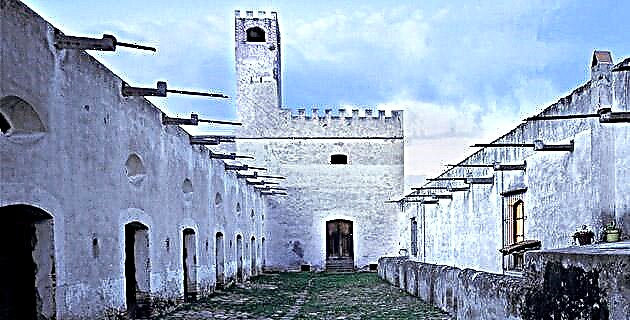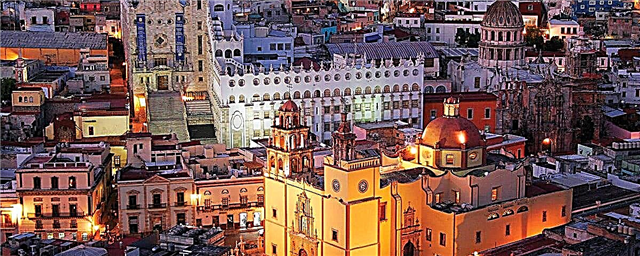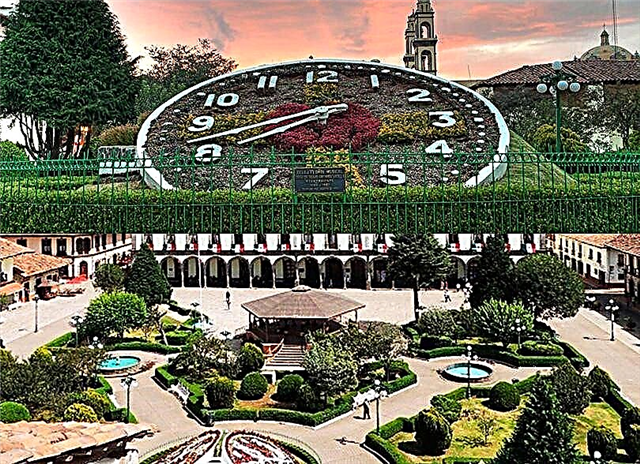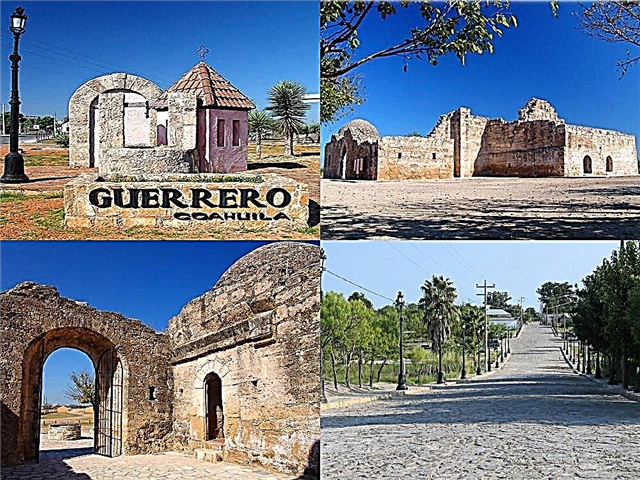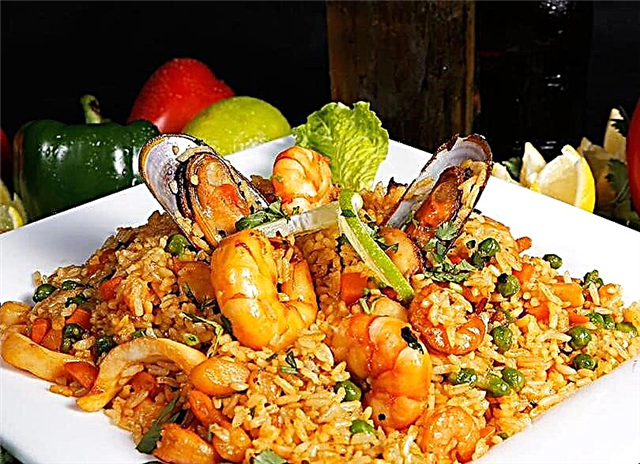Typical Portuguese food is made up of fish, seafood, meats, breads, cheeses and excellent olive oil, among other ingredients.
Let's get to know in this article the 25 most popular dishes in Portugal.
1. Green broth
 The green broth is one of the “7 wonders of Portuguese gastronomy”. A soup based on mashed potatoes and strips of Galician couve (Galician or forage cabbage), an herb that gives it its characteristic green color.
The green broth is one of the “7 wonders of Portuguese gastronomy”. A soup based on mashed potatoes and strips of Galician couve (Galician or forage cabbage), an herb that gives it its characteristic green color.
Other of its ingredients are garlic and olive oil, the combination of which gives a typical smell to some streets of Lisbon, Porto and other Portuguese cities where the soup is served, one also popular in Brazil.
The Portuguese usually prepare the green broth on holidays and after midnight in the New Year's celebration.
The traditional recipe originates from the historical and cultural region of Minho, on the northern border with Spain (Galicia) and includes pieces of chouriço (chorizo).
2. Cooked in the Portuguese
 Cozido à portuguesa is a stew of meats, sausages and vegetables, traditional in Portuguese cuisine. A hearty dish that is served hot to cushion the cold of winter.
Cozido à portuguesa is a stew of meats, sausages and vegetables, traditional in Portuguese cuisine. A hearty dish that is served hot to cushion the cold of winter.
The main meats used are pork and beef, although there are also cooked chicken and chicken.
The most common cuts of pork are smoked ribs (pork entrecosto) and ear, while the usual sausages are farinheira, chorizo and blood sausage.
Although it can have pork bacon, the original farinheira (floured) does not contain pork, since it is made with flour, peppers and a coloring that gives it its red color.
The most commonly used vegetables are potatoes, beans, turnips, carrots, cabbage, and rice. The cooking broth of the meat is used to prepare the stew soup.
The dish is originally from the Areosa parish, in the Alto Minho community.
3. Cod
 The Portuguese are not only experts in curing salted cod, they also claim that there are 365 different ways to eat it, three of them: bacalhau à Gomes de Sá, bacalhau à Brás and bacalhau com, all symbols of national gastronomy.
The Portuguese are not only experts in curing salted cod, they also claim that there are 365 different ways to eat it, three of them: bacalhau à Gomes de Sá, bacalhau à Brás and bacalhau com, all symbols of national gastronomy.
The first of these recipes was invented in Porto by the chef, José Luiz Gomes de Sá Júnior (1851-1926). It has desalted cod, potatoes, garlic, onion and ground white pepper.
Macao was a Portuguese colony between 1556 and 1999, a Lusitanian enclave defined as “casinos, women and cod à Brás”, a recipe for desalted cod in a scramble with potatoes and eggs, one of the most typical in Portugal.
4. Sardines
 Portugal leads the ranking of annual fish consumption in the European Union with an average of 57 kilos per person, which mainly eats cod and sardines.
Portugal leads the ranking of annual fish consumption in the European Union with an average of 57 kilos per person, which mainly eats cod and sardines.
The Portuguese eat huge amounts of sardines a year, both grilled, grilled, canned, baked, pâté and mouse.
The sardine is a symbol of Lisbon and its gastronomy. They are available in metal, ceramic, fabric, cork and of course, in their saucers. They are rich in healthy fats and vitamin D.
5. Portuguese cheeses
 The variety of Portuguese cheeses is enough to have a dozen products with protected designation of origin in Europe.
The variety of Portuguese cheeses is enough to have a dozen products with protected designation of origin in Europe.
Serra da Estrela was already known in the 12th century, being the oldest cheese in Portugal. It is made of sheep and the only one included in the “7 wonders of Portuguese gastronomy”.
Azeitão cheese, originally from the Serra da Arrábida, is made with raw sheep's milk; Transmontane goat cheese is produced in 10 municipalities in the districts of Bragança and Vila Real; while El Queijo do Pico is a cheese native to the island of Pico (archipelago of the Azores) made with raw milk from cows that graze freely.
The other Portuguese cheeses protected in the European Union are Évora (sheep's milk), Nisa (sheep), Mestiço de Tolosa (goat and sheep), Rabaçal (sheep and goat), São Jorge (cow), Serpa (sheep), Terrincho (sheep of the terrincha breed) and Beira Baixa (sheep or goat and sheep).
6. Portuguese gazpacho
 Although the most famous gazpacho is Andalusian, the word derives from the Portuguese word, “caspacho”, which comes from a pre-Roman term that meant: “pieces of bread”.
Although the most famous gazpacho is Andalusian, the word derives from the Portuguese word, “caspacho”, which comes from a pre-Roman term that meant: “pieces of bread”.
The original gazpachos did not have tomato, a vegetable originally from Mesoamerica brought to Europe by the conquerors.
The first gazpachos were made of bread, oil, vinegar, garlic and some ground dried fruit. Currently, the dish cannot be conceived without the color between orange and red that the tomato gives it.
This cold soup is a little different in Portugal and Spain. Unlike the Spanish, the Portuguese do not grind the vegetable ingredients that are basically the same in the classic recipe (tomato, green pepper, cucumber and onion).
7. Chanfana
 It is about goat meat cooked in a clay pot in a wood oven. It is washed down with wine and garnished with parsley, garlic, chillies, pepper and salt.
It is about goat meat cooked in a clay pot in a wood oven. It is washed down with wine and garnished with parsley, garlic, chillies, pepper and salt.
It is typical of the council (municipality) of Miranda do Corvo, in the district of Coimbra, the “capital of chanfana”.
The saucer is believed to have been invented in the early 19th century during the Napoleonic invasion, when the Portuguese killed their herds to prevent them from falling into the hands of invaders.
8. Migas a la alentejana
 These migas are one of the most representative dishes of the Portuguese Alentejo region, a recipe with a high caloric intake served in autumn and winter, whose main ingredients are bread and salted pork.
These migas are one of the most representative dishes of the Portuguese Alentejo region, a recipe with a high caloric intake served in autumn and winter, whose main ingredients are bread and salted pork.
It bears a certain resemblance to Extremadura migas (Extremadura borders the Alentejo) and usually a mixture of ribs and lean parts of salted pork are used, which are desalted from the day before.
Alentejo is the breadbasket of Portugal and the bread used in the recipe is a traditional one from the region, with a rigid texture. First the pork is fried with bacon and garlic and when the pieces are golden brown, the breadcrumbs are incorporated, frying a few more minutes.
9. Açorda a la alentejana
 The açorda à alentejana is a typical Portuguese soup from the Alentejo region that does not require cooking.
The açorda à alentejana is a typical Portuguese soup from the Alentejo region that does not require cooking.
It is a dish of humble origins in which the stale bread is crumbled into crumbs in a mortar and mixed with poached eggs, salt, a good handful of coriander, some garlic and oil, and boiling water. Some versions substitute coriander for mint and include cod or sardines.
The salt, garlic and aromatic herb are crushed and the other ingredients are added, crowning the dish with the poached eggs.
The açorda a la alentejana was one of the finalists in the “7 wonders of Portuguese gastronomy” contest.
10. Alheira
 Alheira is a typical Portuguese sausage originating from Mirandela, a Portuguese municipality in the North Region, which has poultry or pork as meat ingredients; it also has garlic, pepper, bread and oil.
Alheira is a typical Portuguese sausage originating from Mirandela, a Portuguese municipality in the North Region, which has poultry or pork as meat ingredients; it also has garlic, pepper, bread and oil.
The pig was the original sausage of the dish, while the poultry was invented by Portuguese Jews, supposedly converted to Christianity, to avoid having to eat pork, a meat prohibited by the Hebrew religion.
It is served fried or grilled, accompanied by rice, eggs, French fries and vegetables.
The alheira de Mirandela, made with bizarre pigs, a breed native to Portugal, has a Protected Geographical Indication in the European Union. It is also on the list of the "7 wonders of Portuguese gastronomy."
11. Bairrada style roast suckling pig
 Bairrada is a Portuguese natural subregion of the Central Region, whose gastronomic emblem is the roast suckling pig.
Bairrada is a Portuguese natural subregion of the Central Region, whose gastronomic emblem is the roast suckling pig.
Pig farming received a great boost in Bairrada from the seventeenth century and this recipe was already being prepared in 1743 in the monasteries of the area.
The suckling pig must be 1 to 1.5 months old and weigh between 6 and 8 kilos. It is garnished with a salt and pepper paste and unlike other piglets that are roasted open, this one is cooked whole over low heat on a rotating spit.
The seasoning paste inside the piece, the expert eye of the cook and the slow cooking for 2 hours over a wood fire, provide this delicacy with a color, aroma, texture and flavor that are unmatched. It is one of the “7 wonders of Portuguese gastronomy”.
12. Belem cake
 It is a cream cake invented at the Belem Cake Factory (Lisbon) and the only sweet that integrates the list of “7 wonders of Portuguese gastronomy”.
It is a cream cake invented at the Belem Cake Factory (Lisbon) and the only sweet that integrates the list of “7 wonders of Portuguese gastronomy”.
The bakery opened in 1837 and since then people have come to eat them freshly baked and sprinkled with cinnamon and sugar.
The monks of the Los Jerónimos monastery, in the parish of Belem, began offering the cakes that same year and the proximity of the Torre de Belem or Torre de San Vicente also contributed to the subsequent popularity of the sweets.
Although it is offered in many Lisbon and Portuguese patisseries, the original from the Belem Cake Factory is already legendary, with a well-kept secret recipe.
13. Rice with seafood
 Recipe made with a mixture of shellfish and mollusks, which includes shrimp, prawns, lobster, crabs, clams, cockles, mussels and other seafood. The seafood mix depends on the region, the season and the price.
Recipe made with a mixture of shellfish and mollusks, which includes shrimp, prawns, lobster, crabs, clams, cockles, mussels and other seafood. The seafood mix depends on the region, the season and the price.
One of the secrets of the recipe is to cook the seafood first, reserving the broth for the preparation of the rice, one that is previously cooked in a stew with olive oil, garlic, onion, tomato, white wine and the broth. When it is almost ready, the cooked seafood and chopped cilantro are incorporated.
Rice with seafood is one of the “7 wonders of Portuguese gastronomy”. A variant includes pieces of monkfish, a traditional fish in the cuisine of Portugal and Galicia.
14. Breads
 Bread is one of the great icons of typical Portuguese food, a country with a long tradition of making bread from wheat, corn, rye and other cereals.
Bread is one of the great icons of typical Portuguese food, a country with a long tradition of making bread from wheat, corn, rye and other cereals.
Bread is a fundamental component of various Portuguese recipes, such as the migas a la alentejana, the accord a la alentejana and the torricado.
Among the most popular breads are the pão-com-chouriço, the folares and the Boroa de Avintes, the latter the most consumed in the north of Portugal and probably the best known outside the country. It is a dense bread, with an intense and bittersweet flavor and a dark brown color, made with corn and rye flour. It is slow cooking, so it can be in the oven for up to 5 hours.
15. Francesinha
 Powerful sandwich of modern Portuguese cuisine invented in Porto in the 1960s.
Powerful sandwich of modern Portuguese cuisine invented in Porto in the 1960s.
Between two slices of toasted bread is a meat and sausage filling, which can include cooked ham, mortadella, chipolata sausage and a beef or pork fillet.
Slices of cheese are placed on the top, which are then au gratin, and the sandwich is salted with a spicy dressing that has tomato, beer and piri-piri sauce. It is accompanied with fried eggs, french fries and cold beer.
It owes its name to the fact that it was created by the chef, Daniel David Silva, who returned to Porto after some time in France.
The dish is common at lunches and dinners with friends and a variant is the Francesinha Poveira, which replaces sliced bread with baguette.
16. Portuguese cataplana
 It is a typical dish from the Portuguese region of the Algarve, which although it has several versions, in all must be prepared in a cataplana, a traditional kitchen utensil from the southernmost part of the country.
It is a typical dish from the Portuguese region of the Algarve, which although it has several versions, in all must be prepared in a cataplana, a traditional kitchen utensil from the southernmost part of the country.
The cataplana is made up of two almost identical concave parts joined by a hinge. The lower part serves as a container and the upper part serves as a lid. Before they were made of copper and brass, now most are made of aluminum and some are covered with copper that gives them an old appearance.
The most popular are those of fish, shellfish and clams, although there are also pork and other meats. The utensil seems to derive from the Arabic tagine, with which it bears a certain resemblance.
17. Cavaco
 The cavaco or king prawn is a crustacean from the Mediterranean and the eastern part of the North Atlantic, which is distinguished by lacking claws and by having a thick shell that it uses as armor.
The cavaco or king prawn is a crustacean from the Mediterranean and the eastern part of the North Atlantic, which is distinguished by lacking claws and by having a thick shell that it uses as armor.
It is a delicacy that is difficult to obtain due to the rarity of the species, the overfishing and the difficulties in catching it. Manual capture by diving has become popular and is believed to be significantly affecting the population.
Some people consider it ugly because of its prehistoric appearance, but it is one of the seafood most appreciated by gastronomes in Portugal and Spain.
18. Cozido das furnas
 The volcano stew is one of the most spectacular dishes offered by the gastronomy of the Azores, a Portuguese autonomous region characterized by its volcanic cones and craters. It is prepared in the heat of a volcano in the parish of the island of Sao Miguel, a town of 1,500 inhabitants.
The volcano stew is one of the most spectacular dishes offered by the gastronomy of the Azores, a Portuguese autonomous region characterized by its volcanic cones and craters. It is prepared in the heat of a volcano in the parish of the island of Sao Miguel, a town of 1,500 inhabitants.
It is a traditional Portuguese stew of pork, beef or chicken, with vegetables and rice, which is placed in a tightly closed pot that must be stored at dawn in the holes dug in the ground, so that the stew is ready at noon.
19. Rojones in the style of Minho
 The rojões à moda do Minho are a typical dish of Portuguese cuisine in the Minho region, north of Portugal. These are boneless pieces of pork, but with a little fat, like the cuts of the legs.
The rojões à moda do Minho are a typical dish of Portuguese cuisine in the Minho region, north of Portugal. These are boneless pieces of pork, but with a little fat, like the cuts of the legs.
The pieces of meat are marinated the night before in the typical Portuguese green wine produced in the Entre Douro e Minho region and are garnished with peppers, bay leaf, salt and pepper. Then they are browned in butter and simmered in the marinade liquid.
They are eaten with fried tripe in strips and sarrabulho rice, a typical Minho cereal prepared with meat and pig's blood. Quite a calorie festival good for the harshest days of winter.
20. Caldeirada
 Caldeirada or stew is a stew of Portuguese and Galician cuisine, whose basic ingredients are fish, potato, tomato, pepper and onion, seasoned with salt, spices and aromatic herbs.
Caldeirada or stew is a stew of Portuguese and Galician cuisine, whose basic ingredients are fish, potato, tomato, pepper and onion, seasoned with salt, spices and aromatic herbs.
The stew can be as liquid as a soup and is served with slices or pieces of toast.
Lamb caldeirada is common in African countries of Portuguese heritage such as Angola and Mozambique.
In Portugal the caldeirada poveira is famous, a specialty of the city of Póvoa de Varzim, in the North region. It is prepared with conger eel, monkfish and ray, plus clams, squid and the usual vegetables.
The ingredients are layered, starting with the clams and drizzling with olive oil and white wine.
21. Olive oil
 One of the star components of typical Portuguese food is the excellent olive oil produced by the Iberian country.
One of the star components of typical Portuguese food is the excellent olive oil produced by the Iberian country.
Roast meats, fish such as cod, salads and many other recipes in his kitchen are unthinkable without a good national olive oil.
In Portugal there are 6 olive oil production regions with a designation of origin protected by the European Union, the Azeite de Moura being one of the most famous. The others are Trás-os-Montes, Interior Alentejo, Beira (Alta and Baixa), Norte Alentejano and Ribatejo.
The Azeite de Moura is produced in the councils of Moura, Mourão and Serpa, belonging to the historical region of Alentejo in south-central Portugal. It is a very versatile extra virgin oil in the kitchen.
22. Bulhão Pato Clams
 Amêijoas à Bulhão Pato are a traditional dish of Portuguese gastronomy that is prepared with clams, garlic, coriander, pepper and salt, seasoning with lemon when serving. Some recipes add a little white wine.
Amêijoas à Bulhão Pato are a traditional dish of Portuguese gastronomy that is prepared with clams, garlic, coriander, pepper and salt, seasoning with lemon when serving. Some recipes add a little white wine.
The name of the dish is a tribute to the Portuguese essayist, poet and memorialist, Raimundo António de Bulhão Pato, who mentions the recipe in his writings.
The clams are cooked in their shell, giving presence to the dish, one of the 21 finalists in the “7 wonders of Portuguese gastronomy” contest, held in 2011 with the sponsorship of the Secretary of State for Tourism.
23. Azeitão Cake
 Azeitão cake is a traditional dessert from the União das Freguesias de Azeitão parish, in the municipality of Setúbal. Iconic Portuguese cake made with eggs, egg yolks, water and sugar.
Azeitão cake is a traditional dessert from the União das Freguesias de Azeitão parish, in the municipality of Setúbal. Iconic Portuguese cake made with eggs, egg yolks, water and sugar.
Egg-based desserts are very popular in Portugal, with any number of regional variants.
The Azeitão cake is smooth and creamy and is covered with a sweet layer of egg yolk. It is presented in a perfect roll.
24. Octopus lagareiro
 It is a recipe in which the octopus is first softened on the stove, preferably in a pressure cooker, then it is grilled and when served it is drizzled with plenty of hot olive oil.
It is a recipe in which the octopus is first softened on the stove, preferably in a pressure cooker, then it is grilled and when served it is drizzled with plenty of hot olive oil.
The initial cooking is done with the octopus in the pressure cooker, plus a whole onion, peppercorns, bay leaves and salt. It is cooked for 30 minutes without adding water, grilled, drizzled with oil and eaten with thin slices of garlic, onion and olives, plus chopped coriander and battered potatoes.
The lagareiro is a person who works in an olive press extracting olive oil. The name of the recipe is due to the good jet of oil it contains.
25. Sintra complaints
 Queijadas are small Portuguese sweets made with queso or requeijão (a Lusitanian cream cheese not to be confused with cottage cheese), milk, eggs and sugar. They are the gastronomic symbol of Sintra, a Portuguese town absorbed by the Lisbon Metropolitan Area.
Queijadas are small Portuguese sweets made with queso or requeijão (a Lusitanian cream cheese not to be confused with cottage cheese), milk, eggs and sugar. They are the gastronomic symbol of Sintra, a Portuguese town absorbed by the Lisbon Metropolitan Area.
The sweet is also popular in other areas of Lisbon, Madeira, Montemor-o-Velho and Oeiras, but it was in Sintra where the first queijadas were made in the 13th or 14th century.
The first formal factory was installed in the 18th century, when a pastry shop was opened to provide for the royalty and aristocracy who spent their summer in the town.
The sweet is a tourist attraction in Sintra, a town declared a World Heritage Site for its architectural heritage that combines Moorish, Gothic, Mudejar and Baroque styles.
What is the typical food of Portugal
With 1793 km of coastline, it is understood why the Portuguese are the first fish eaters in Europe, with a large number of typical recipes based on cod, sardines and other species.
The other iconic food of the Portuguese is bread, which they eat with their excellent cheeses and in migas dishes.
Portugal foods and customs
Portugal is very Catholic, a church that has had enormous influence in the country since the Middle Ages.
In the Portuguese Catholic monasteries, iconic dishes of Portuguese gastronomy were created, such as the Belem cake and the Bairrada-style roast suckling pig.
The culinary customs of Christmas and New Year include some symbolic dishes such as green broth, cod in various presentations, cream cakes and honey broas.
Easy Portuguese food
Some Portuguese recipes are elaborate, but others are very easy to prepare.
Cod à Brás is a simple scramble of fish with eggs and potatoes; while grilled sardines are very simple to make, just like the Belem cakes.
Typical drink of Portugal
The wines are the typical drink of Portugal, highlighting the green wine, the Madeira, the Port and the Muscat of Setúbal.
Green wine is produced on the Costa Verde. It is characterized by its high acidity due to the barely ripe grapes used.
Madeira, produced on the island of the same name, and Porto, made in the Alto Douro Wine Region, are world-famous fortified wines.
History of the gastronomy of Portugal
Portuguese gastronomy revolves around bread, fish, olive oil and wine and as such can be framed within the scope of Mediterranean cuisine with its European, Arab and oriental influences.
The Portuguese colonies in Africa influenced the national culinary art, mainly through the use of spices, although there are also contributions from Berber cuisine, particularly Moroccan gastronomy.
Typical Portuguese food: images
Bairrada style roast suckling pig, icon of Portuguese cuisine

Francesinha, one of the symbols of modern Portuguese gastronomy.

Caldo Verde, the most popular soup in Portugal.

Which of these dishes of typical Portuguese food has caught your attention? Share the article so that your friends and friends can also take a delicious virtual tour of the kitchen of Portugal.


